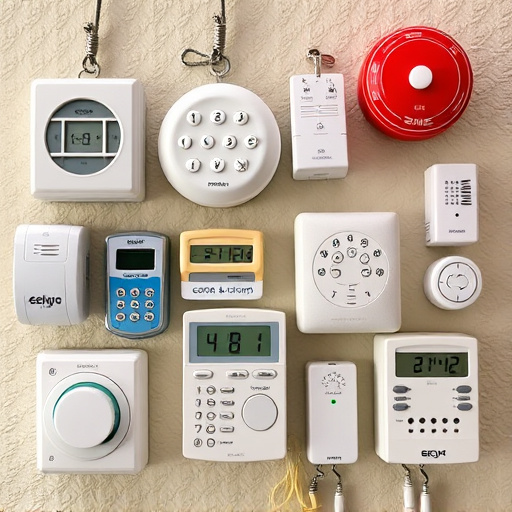Lone workers face unique risks due to isolation, making immediate assistance during emergencies challenging. Personal Alarms with Remote Activation are vital tools that empower them to signal distress instantly by pressing a button. These devices transmit alerts to designated contacts or emergency services with location and situation details, enhancing safety and confidence in isolated environments. When choosing such an alarm, prioritize features like remote activation, durable construction, automatic fall detection, water resistance, loud sound levels, long-lasting batteries, and GPS tracking for optimal protection. Effective implementation and training ensure lone workers can confidently use these alarms in emergency situations.
Lone workers, often unsupervised and isolated, face unique safety risks. Understanding these hazards is paramount in developing effective strategies to safeguard them. This article explores essential aspects of lone worker safety alert systems, with a focus on personal alarms with remote activation. We’ll delve into the critical role of these devices during emergencies, key features to consider when choosing, and best practices for implementation and training to ensure their optimal use.
- Understanding the Risks of Lone Worker Safety
- The Role of Personal Alarms in Emergency Situations
- Features to Consider When Choosing a Remote Activation Alarm
- Implementing and Training for Effective Use of Lone Worker Safety Systems
Understanding the Risks of Lone Worker Safety
Lone workers, by definition, operate independently and may face unique risks that aren’t immediately apparent to others. Their isolation can make it more challenging to receive timely assistance in case of an emergency or accident. This is where safety alert systems become indispensable tools. These systems are designed to mitigate potential hazards and ensure the well-being of individuals working alone in diverse sectors, from construction sites to healthcare facilities.
One critical component of these systems is a personal alarm with remote activation capabilities. Such devices empower lone workers by providing them with an immediate means of signaling distress or danger. With a simple press of a button, they can transmit alerts directly to designated contacts or emergency services, offering vital information about their location and situation. This technology not only enhances safety but also instills confidence in an often isolated working environment.
The Role of Personal Alarms in Emergency Situations
In emergency situations, lone workers equipped with a personal alarm that can be remotely activated play a crucial role in enhancing safety. These portable devices are designed to provide a rapid means of communication and assistance when individuals find themselves in distress or hazardous conditions. With just a push of a button, a worker can send an alert to designated contacts or emergency services, enabling swift response times. This technology is particularly vital for workers who frequently operate in remote locations or high-risk environments where immediate help may be needed.
The personal alarm with remote activation capability offers a sense of security and peace of mind. It allows colleagues, supervisors, or emergency responders to accurately pinpoint the worker’s location using GPS tracking, further facilitating efficient rescue operations. Moreover, these alarms often incorporate various features like strobe lights and loud sirens to attract attention and deter potential dangers, ensuring lone workers have a powerful tool at their disposal during critical incidents.
Features to Consider When Choosing a Remote Activation Alarm
When selecting a Personal Alarm With Remote Activation for lone workers, several key features should be top of mind to ensure safety and peace of mind. One crucial aspect is the alarm’s remote activation capability, allowing colleagues or emergency services to trigger it from a distance if help is needed. This feature is pivotal in situations where immediate assistance is required, especially in isolated or hazardous environments.
Additionally, consider alarms with durable construction designed for harsh conditions, automatic fall detection, and integration with existing communication devices. Water resistance, loud sound levels, and long-lasting batteries are also essential to guarantee reliability during critical moments. Features like GPS tracking can further enhance safety by providing precise location data to rescue teams.
Implementing and Training for Effective Use of Lone Worker Safety Systems
Implementing and training are critical components for ensuring lone workers effectively utilize safety systems, such as personal alarms with remote activation. When introducing any new technology, providing clear, concise guidance is essential. This includes demonstrating how to activate the alarm, both manually and remotely, under various scenarios like emergencies or when assistance is needed. Training should also cover battery maintenance, regular testing of devices, and understanding the reach and limitations of the signal for remote activations.
Regular practice sessions can reinforce learning and build familiarity with the system. It’s beneficial to simulate real-world situations during training to help workers anticipate and respond appropriately. Additionally, fostering open communication encourages workers to report any issues or concerns about the safety system, ensuring continuous improvement in its effectiveness.
Lone workers face unique challenges, but implementing safety alert systems, particularly Personal Alarms With Remote Activation, can significantly enhance their protection. By choosing features that cater to specific work environments and ensuring proper training, organizations can create a safer and more supportive ecosystem for these individuals. Investing in such systems isn’t just about compliance; it’s a proactive step towards fostering a culture of safety and well-being for all lone workers.
